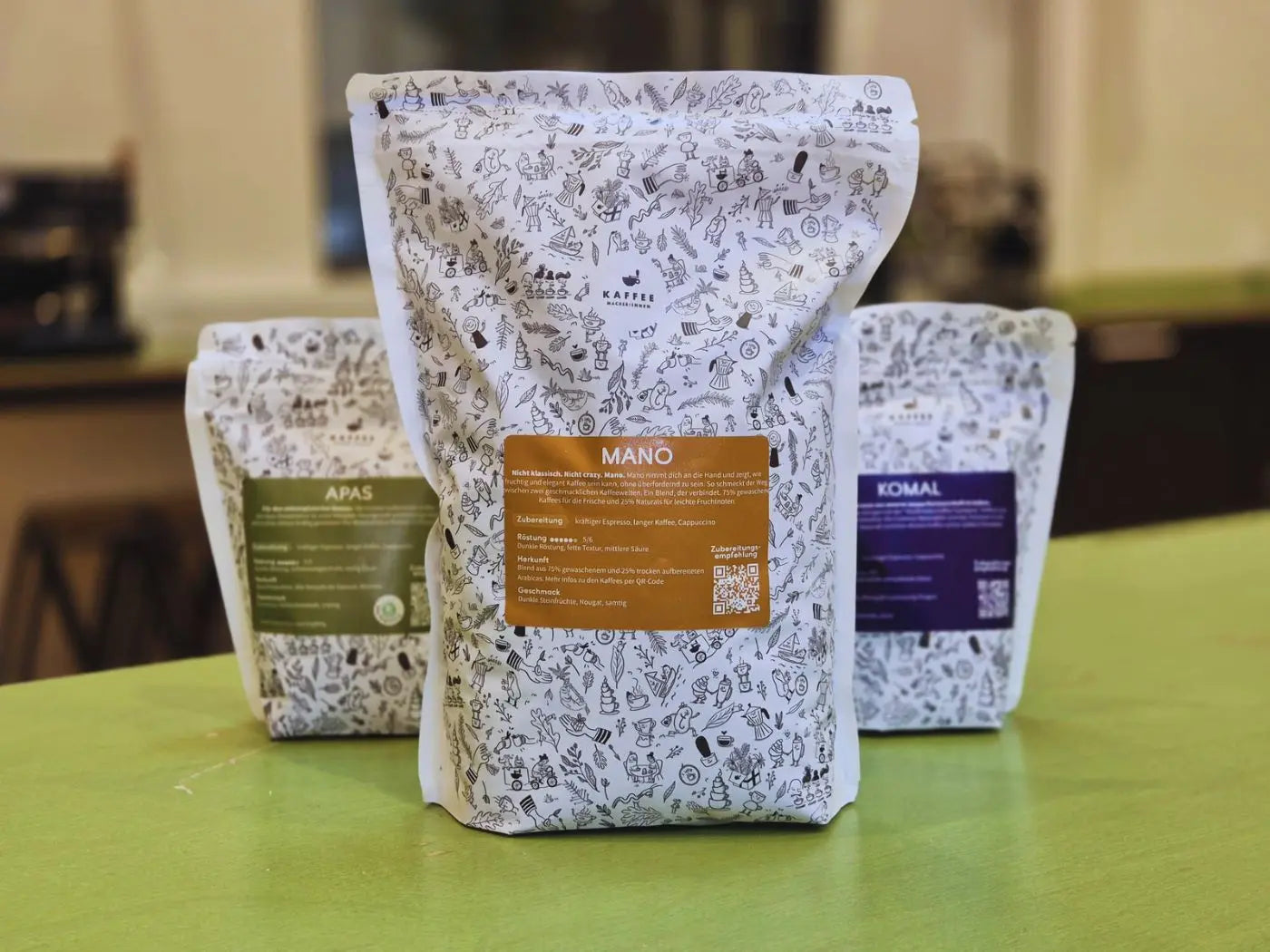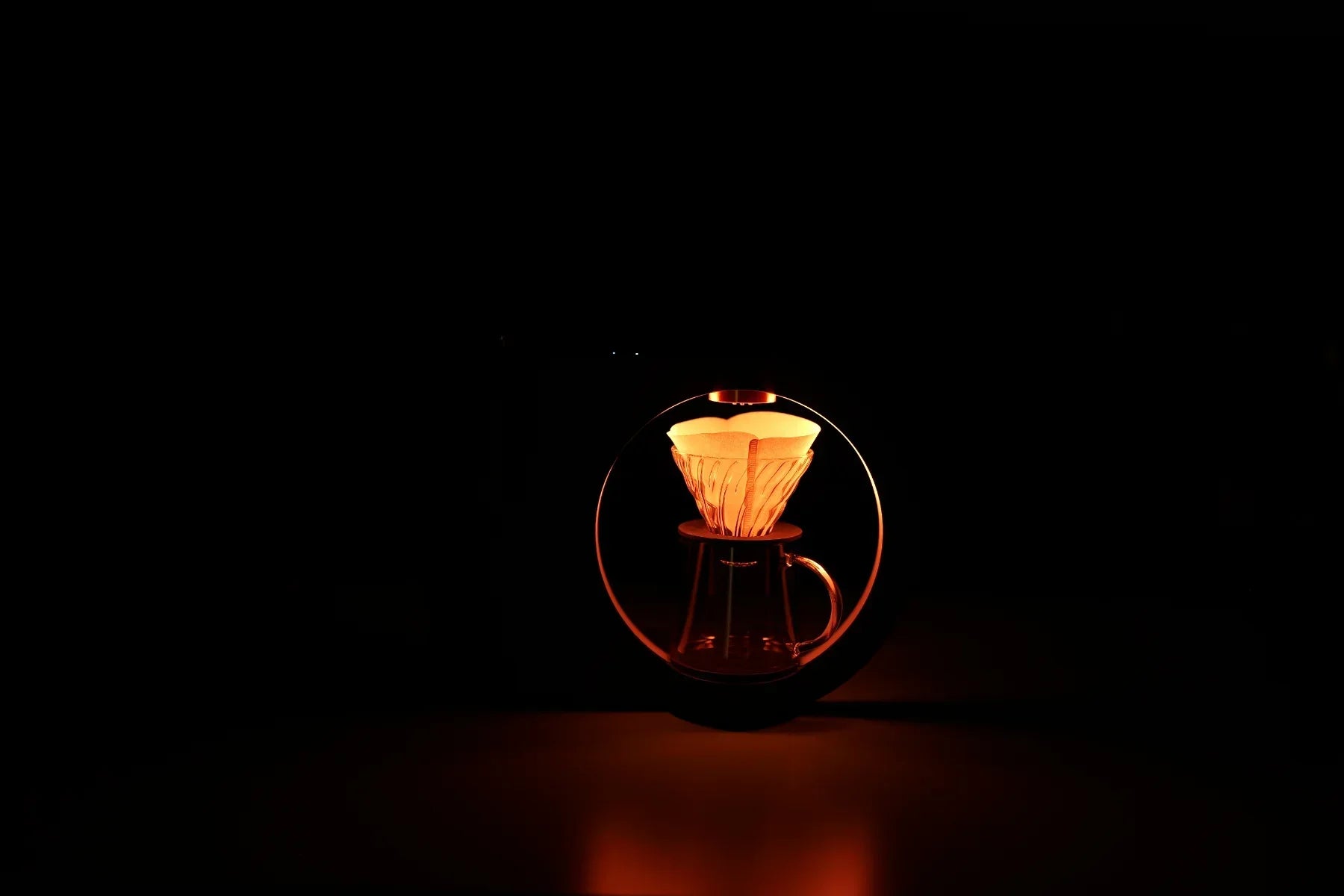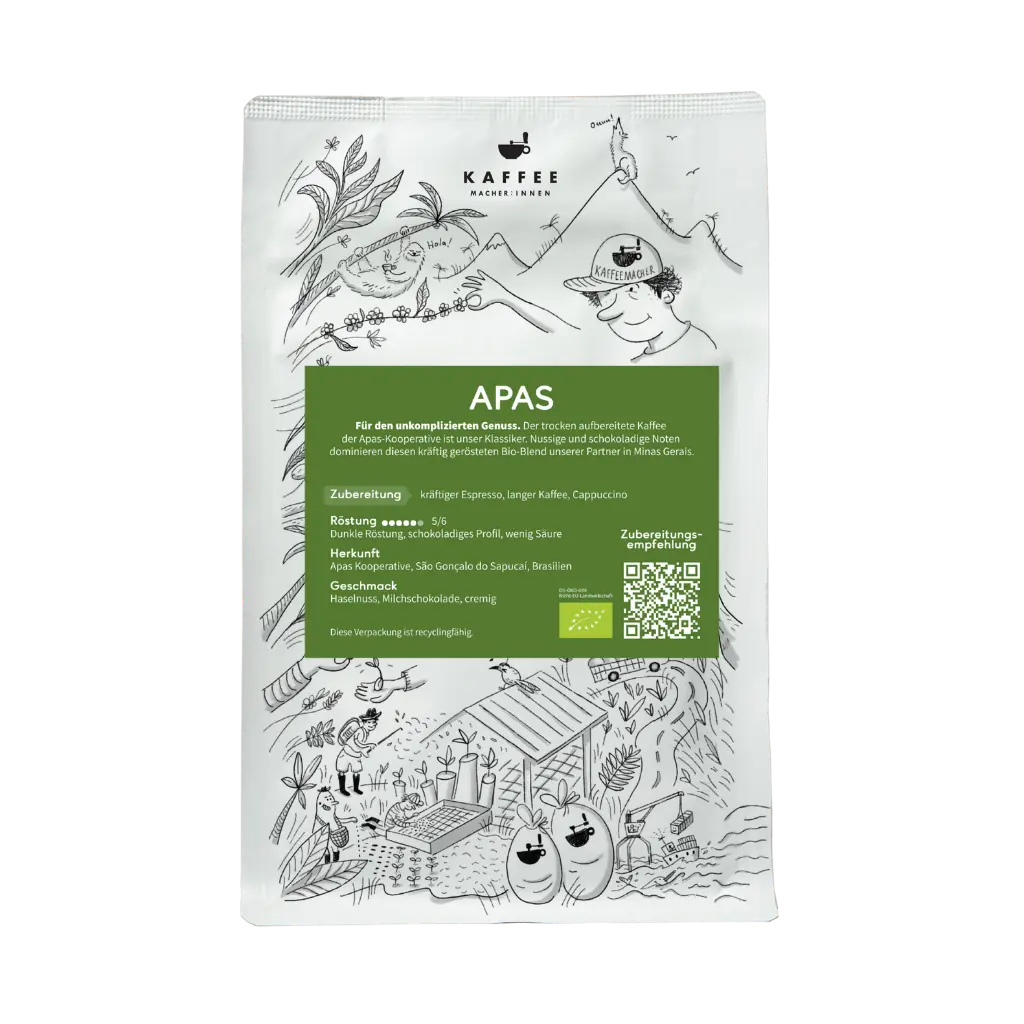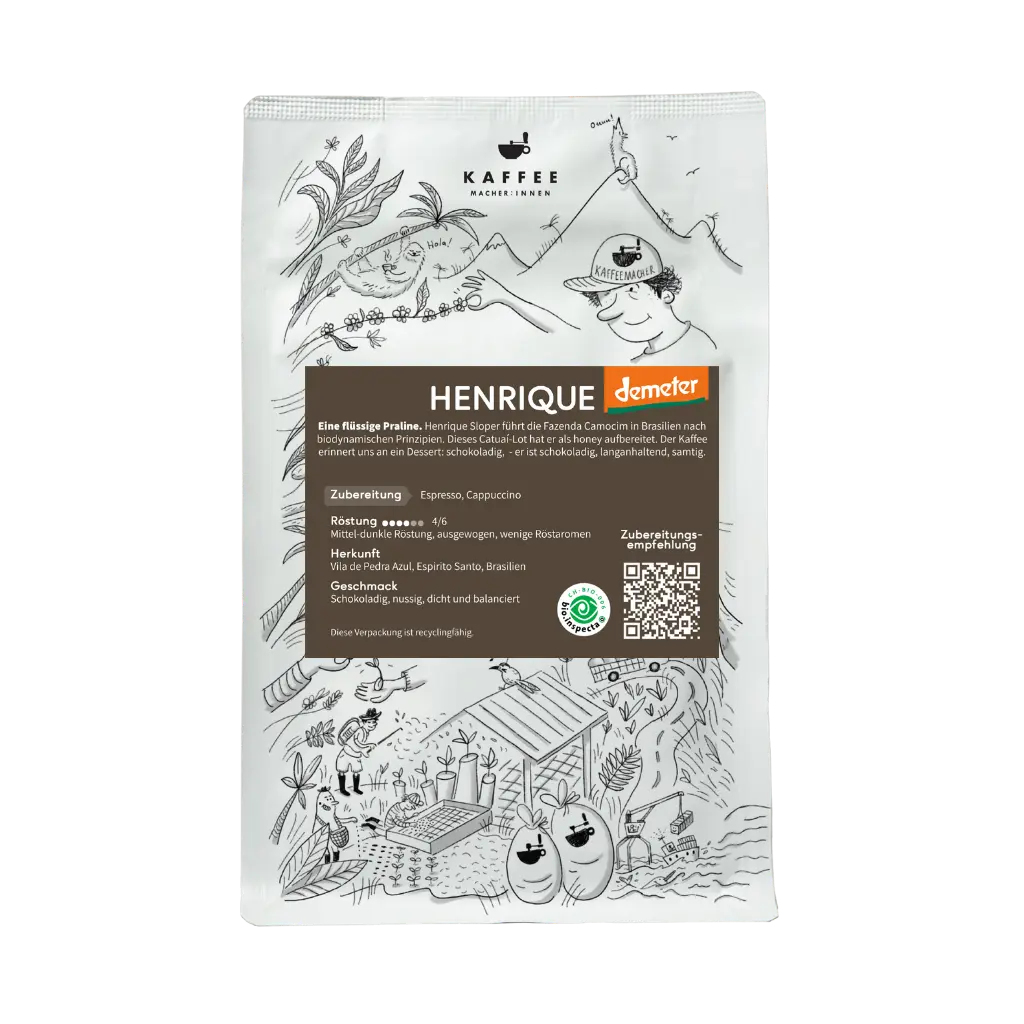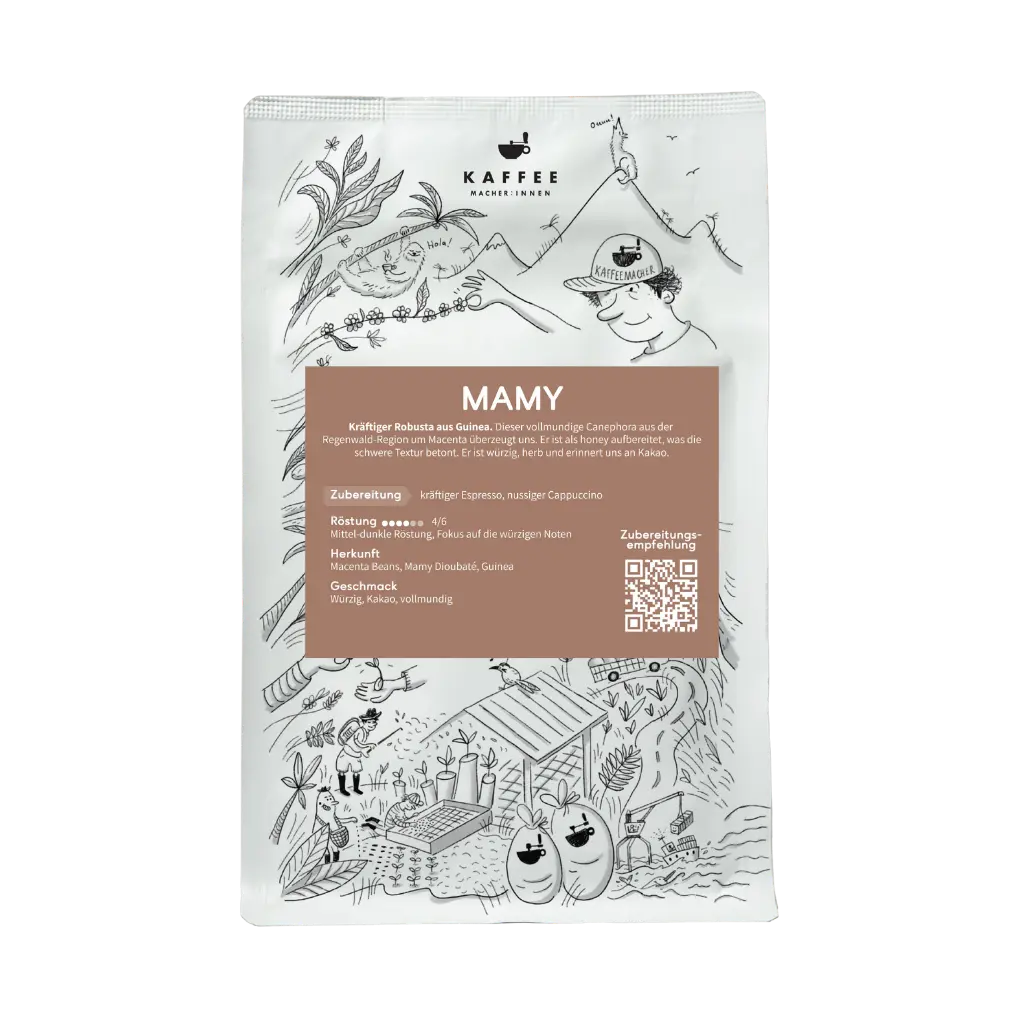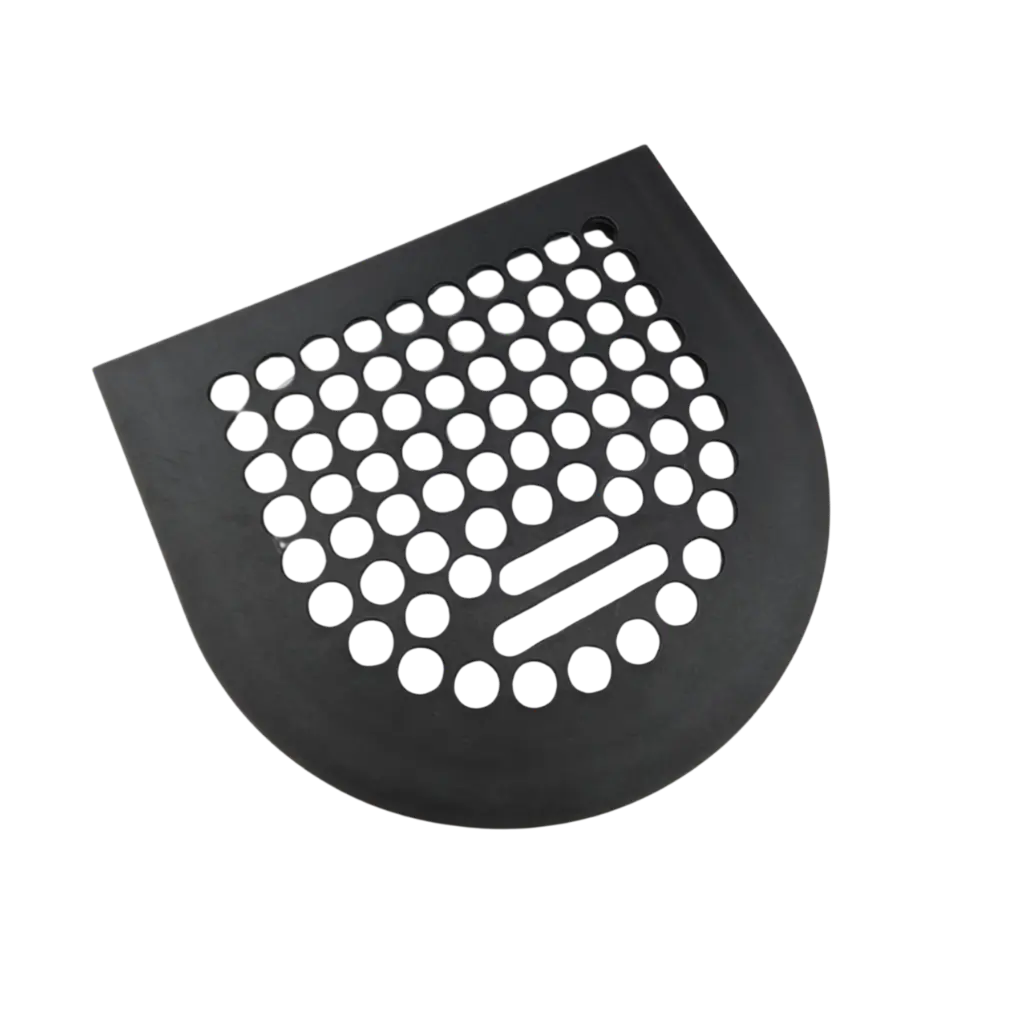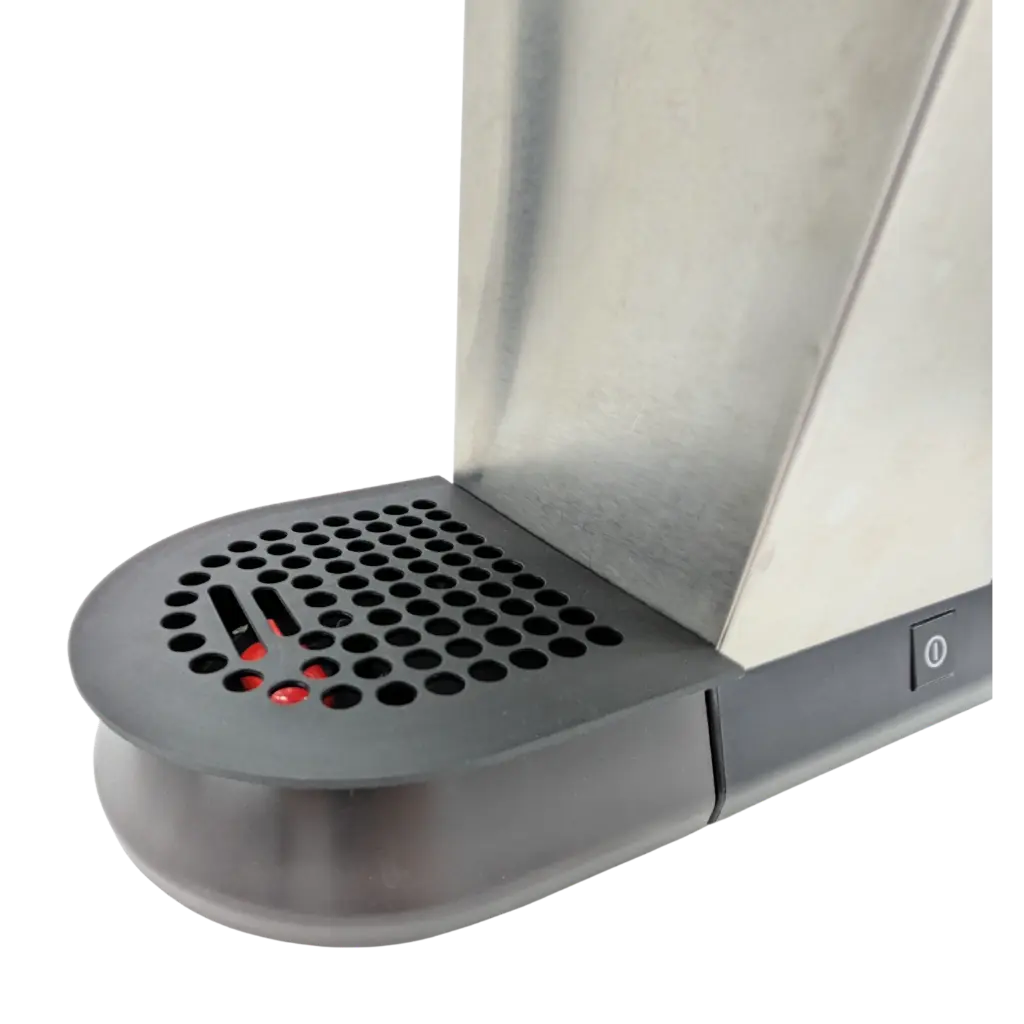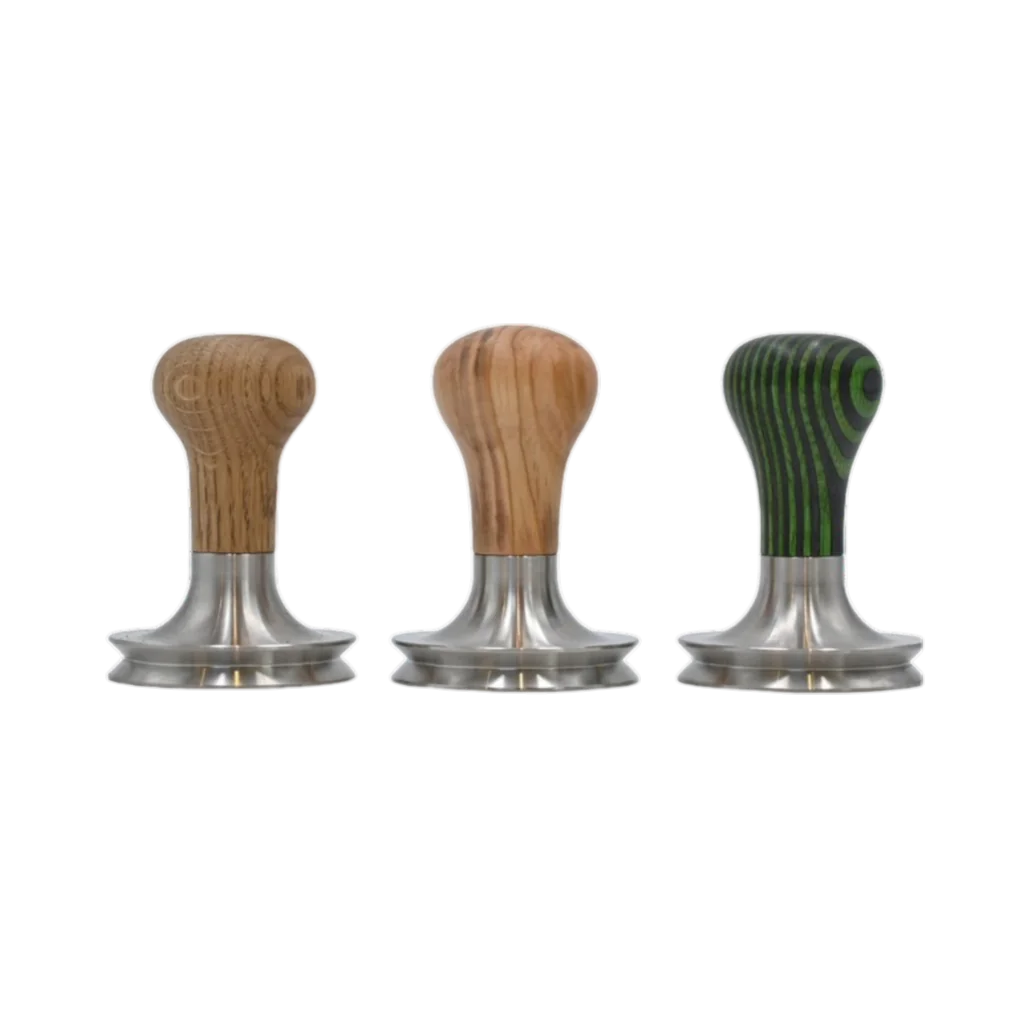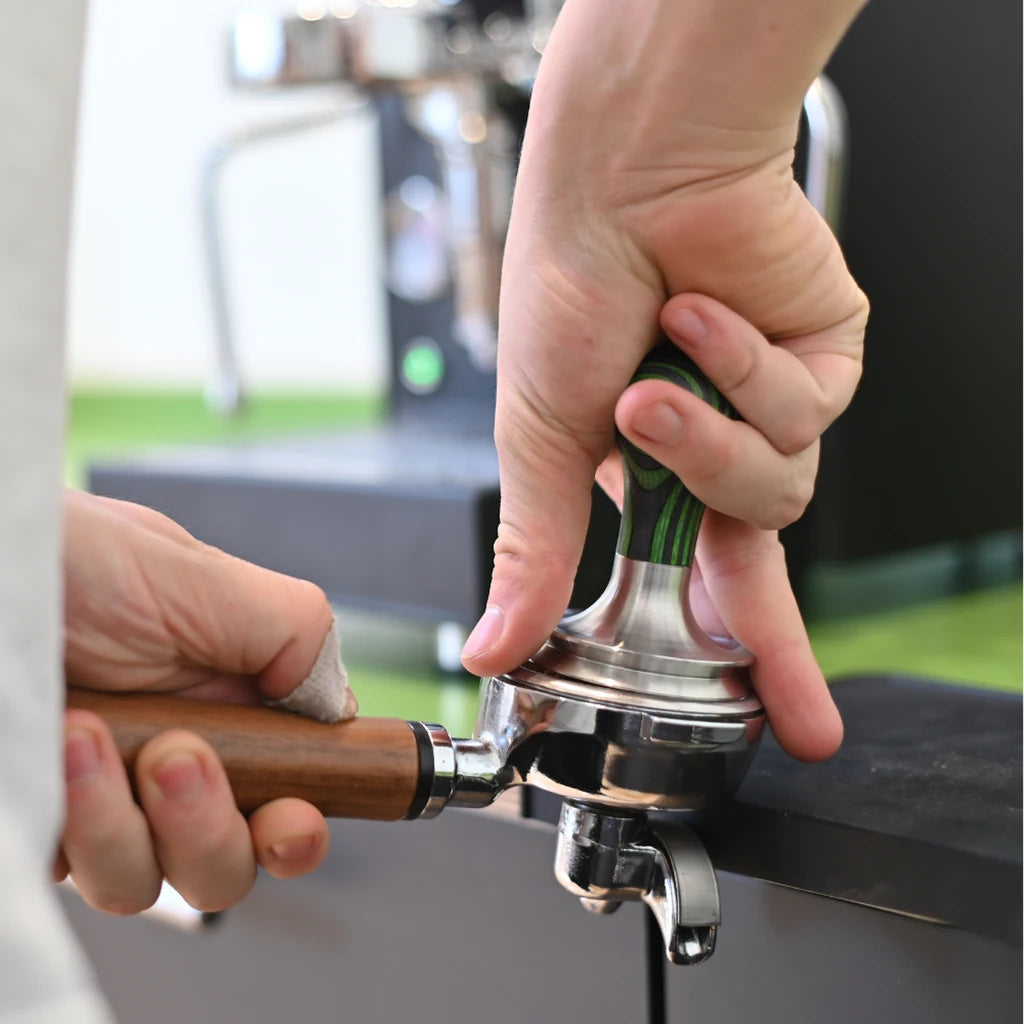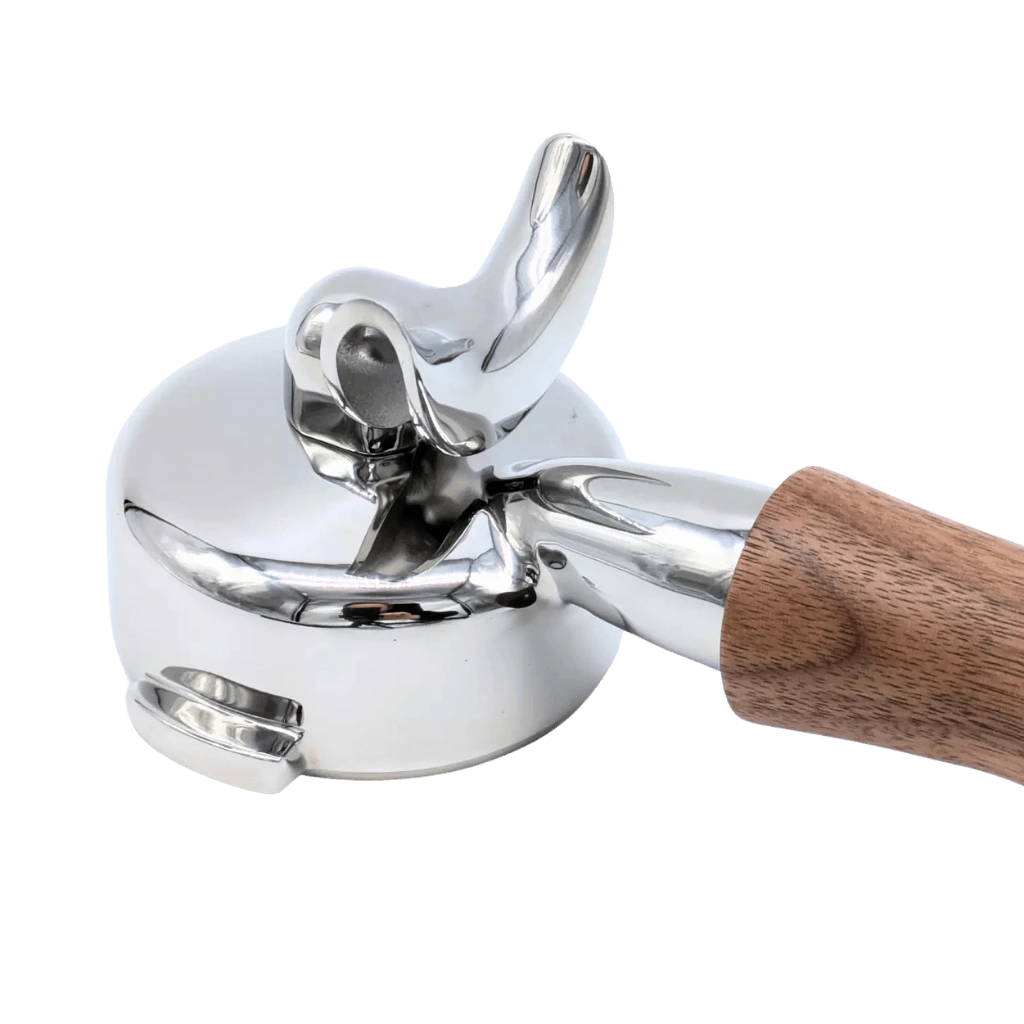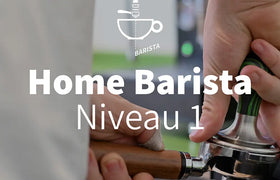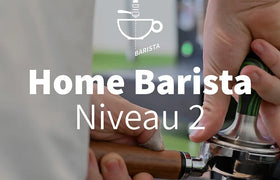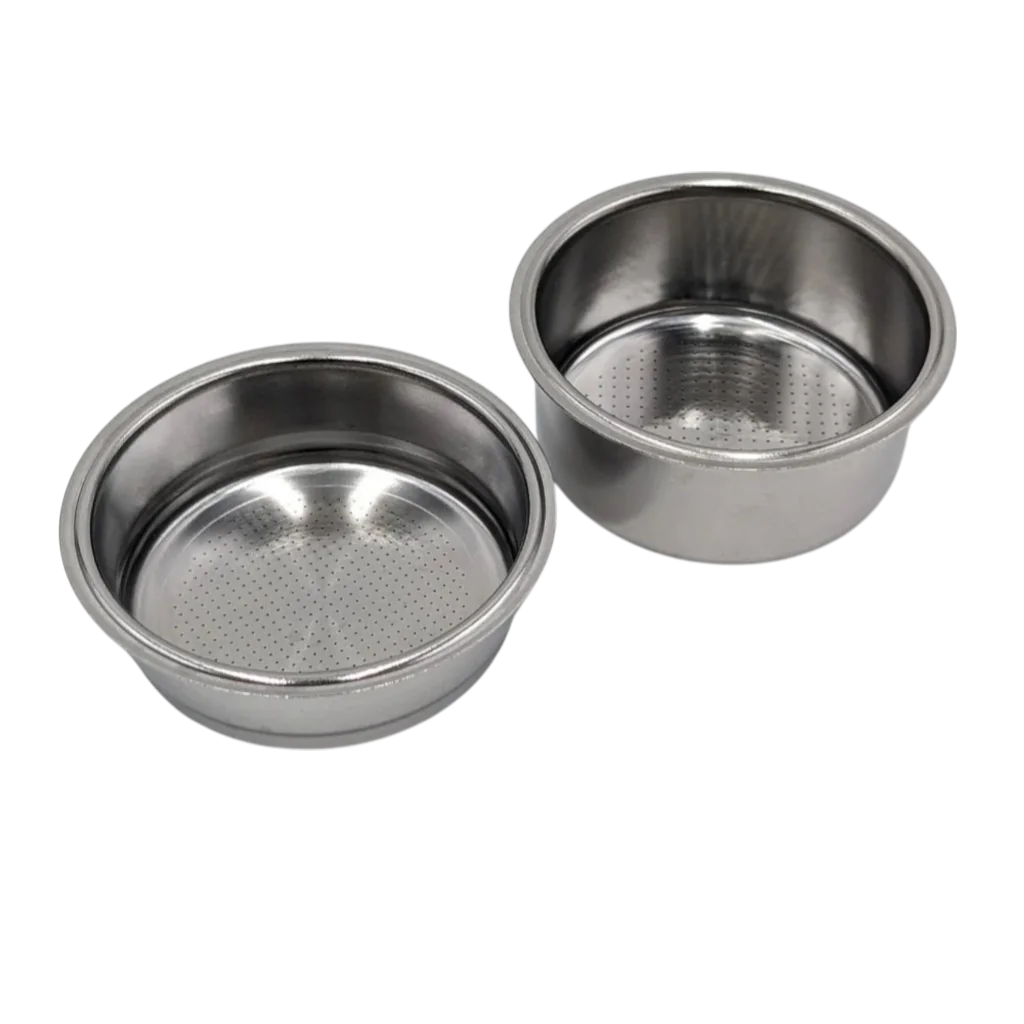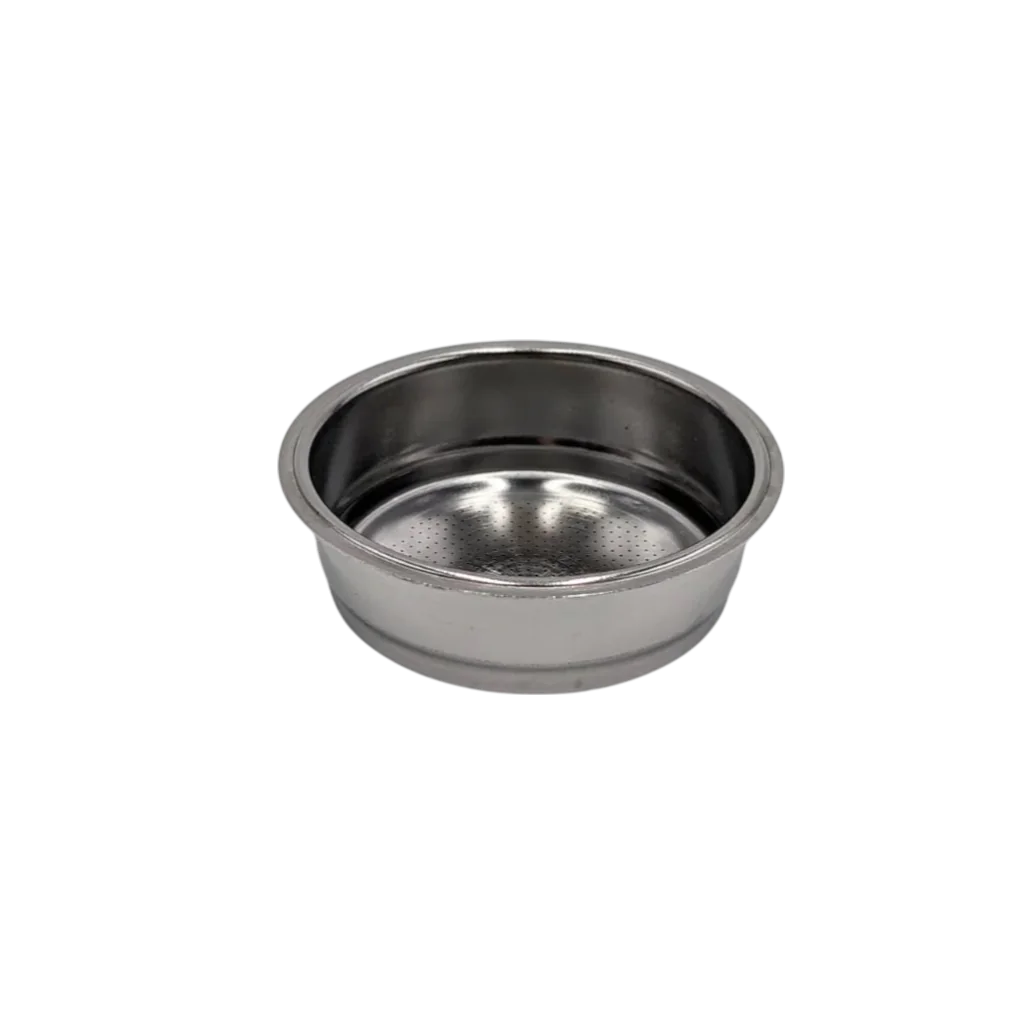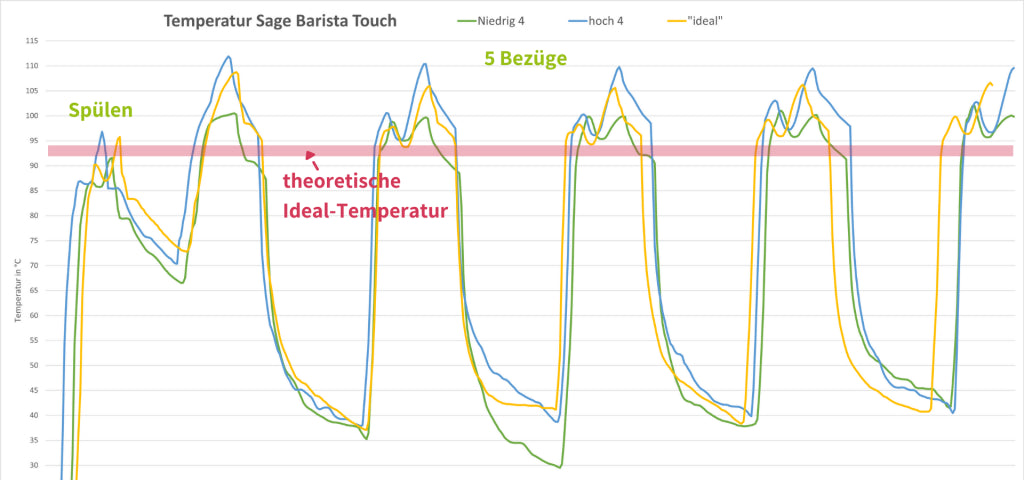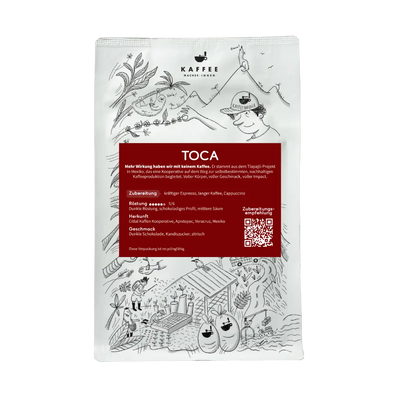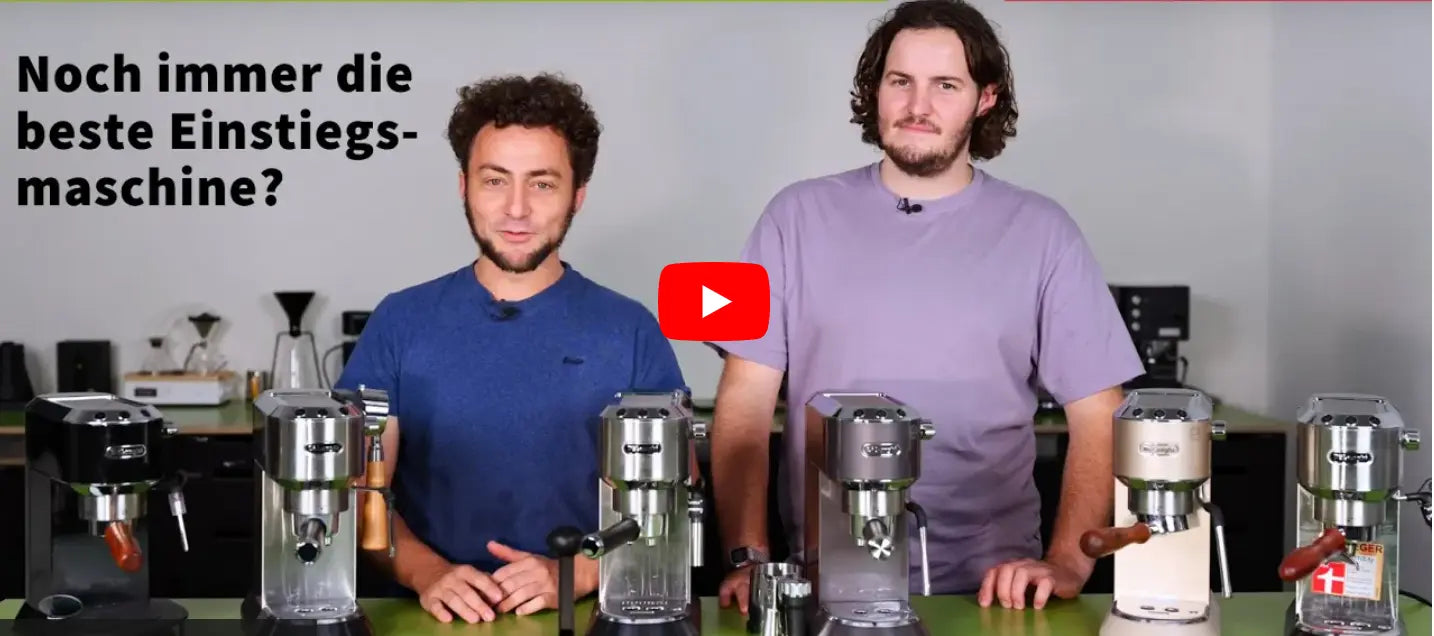The Sage Barista Touch is a combination machine. It combines a grinder and an espresso machine. This is practical and has some advantages, such as the small space requirement. On the other hand, it is difficult to upgrade.
We put the mill and the machine through their paces and will tell you in the following test report how the Barista Touch performed.
Semi-automatic with fully automatic painting
This thermoblock machine attempts a balancing act between a classic portafilter machine and a fully automatic machine. Almost all settings are operated via the display, except for the grinding level. This is adjusted using a rotary wheel.
You can then choose from many different mixed coffee drinks in the menu, such as flat white, cappuccino or Americano. But if you take a closer look, you'll quickly notice that most drinks are created with the same settings. This is simply because espresso is used as the base for most mixed drinks.
The amount of coffee that is ground can only be adjusted in seconds with the Barista Touch. That's too bad. The Smart Grinder Pro mill from the same company can do this with an accuracy of a tenth of a second and the Barista Pro, also a combination machine, can do this with an accuracy of half a second. However, one second, like here with the Barista Touch, makes a world of difference. If you want 18 grams of coffee, you might only get 17.5 grams with one second too little, but with one second more you might get 18.5 grams. That's annoying.
During the brewing process, the Sage Barista Touch supports the user with tips on the display. However, some of these tips are simply wrong. The ideal extraction time for an espresso is around 10-12 seconds, although a time of 25 seconds should be aimed for. With the suggested 10 seconds, the espresso tastes as sour as a hot lemon.

A display with touch and little more
Some settings on the Barista Touch are very helpful. For example, the milk temperature and the milk foam level can be adjusted. The milk foam performance is generally very good. However, the display, which is the core of this machine, is not really necessary for the machine to function. It also reacts rather poorly compared to a cell phone display.
Unfortunately, the Barista Touch looks a bit like it's a combination of the Sage Barista Pro and the Oracle Touch. But it doesn't really come across as convincing.
Temperature excesses – how far above 100 can it go?
The Barista Touch works with a so-called thick film heater. This is supposed to be a further development of the instantaneous water heater. The advantage is that the machine is hot after just 3 seconds. The energy transfer is gigantic and the machine's power consumption is extremely low.
The heat is transferred to the brewing water using a heating plate. This is faster than with a thermoblock, whose intermediate aluminum block has a slow heating effect. It would even be conceivable to run different temperature profiles with the thick film heater. Unfortunately, the Barista Touch does not have an exact control unit for the temperature. There are a total of 8 adjustable temperature levels, but even the lowest level reaches 98 degrees Celsius and is therefore far too hot. We aimed for a temperature of 93 degrees, but we couldn't achieve that in any setting.
But what does the excessively hot temperature do to the espresso? An espresso brewed too hot tastes very bitter, dry and harsh. That's just not fun. You can't actually brew a delicious espresso with the Barista Touch.
Dual-circuit milk foam
Another chapter is the milk foam performance. Milk can be foamed automatically or manually. The steam wand is ready to foam immediately after the espresso has been made, almost like a two-circuit steamer. It is not possible to foam at the same time as the cover. With the automatic function, the temperature of the jug is measured via a sensor near the drip tray. The milk temperature can be adjusted and is very precise. The automatic system works well and you can also produce great milk foam manually. However, we advise you to switch to the manual method in order to create really fine-pored latte art foam.
Scope of delivery, size and expansion
The scope of delivery includes two single-walled sieves and one double-walled sieve. Also a milk jug and a tamper. The included Sage Razor is intended to allow you to get coffee powder out of the portafilter if too much has been ground into it. However, this should not be the case with a correctly adjusted grinder.
The Sage Barista Touch is 34 cm wide, 41 cm deep and 40.6 cm high. The two liter water tank is easy to remove and the machine's workmanship appears to be of high quality thanks to its brushed stainless steel.
“Volumetric control” for espresso
The Sage website does say that the Touch has volumetric control. However, we cannot confirm this. The amount of water is not dosed via volumetrics, but via time control.
A volumetric always gives the same amount of water through the coffee cake. For example, if you set 45 grams of water, this will always be delivered. The resistance of the coffee doesn’t matter at all. The processing time increases or decreases depending on the fineness of the coffee grounds, but you always end up with 45 grams of water.
With the Barista Touch you can set the brewing time. If the coffee powder is too fine, you may only have a few milliliters in the cup; if the grind is too coarse, the cup will almost overflow.
Volumetrics makes much more sense for beginners. The brewing recipe (e.g. 1 part coffee to 2.5 parts water) is not changed. You just adjust the throughput speed by the grinding degree. With time control, however, you have to tweak your brewing ratio every time you adjust the amount of water. This is more complicated and makes the use of a scale essential. This is not beginner-friendly.
Conclusion on the Sage Barista Touch
The Barista Touch would be really great as a pure milk frother. It foams well and reliably and is fun for every barista.
But unfortunately the espressos we bought don't taste good. The brewing temperature is inconsistent and far too hot.
That's why you should carefully consider whether the additional price for the Barista Touch makes sense. Other models from Sage, such as the Bambino Plus or the Barista Pro, are almost in no way inferior to the Barista Touch. You have to decide whether you are willing to spend the extra price for the Barista Touch just for the automatic milk foam function.
There are also alternatives from other manufacturers for €1000 that you should take a look at, such as the Quick Mill Orione 3000 or the Gaggia New Classic. Some dual-circuit machines are also available for this price.
